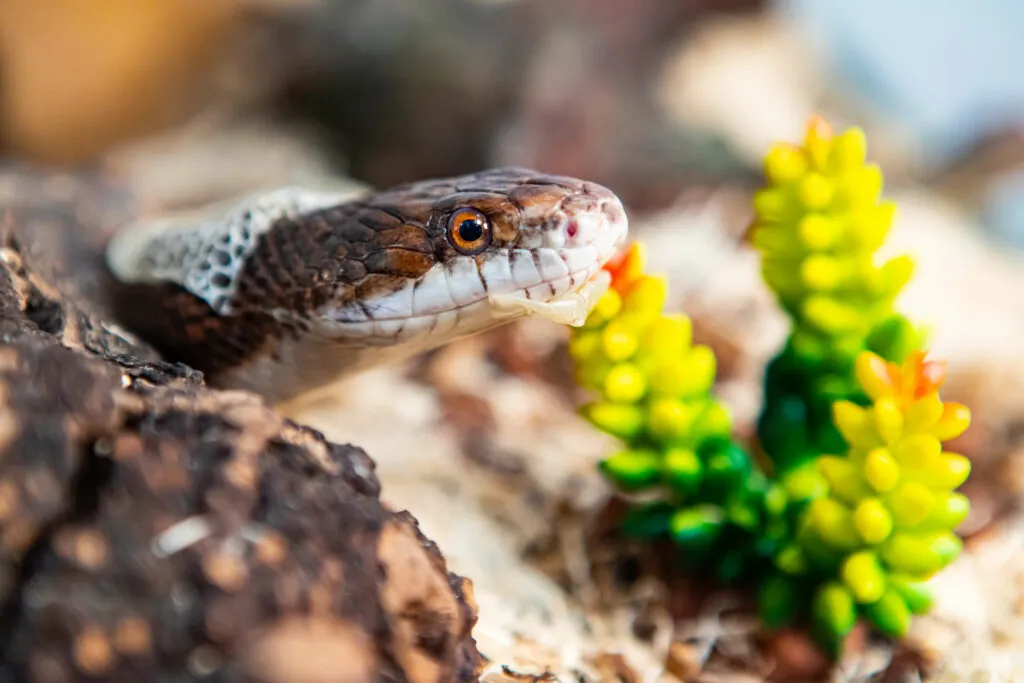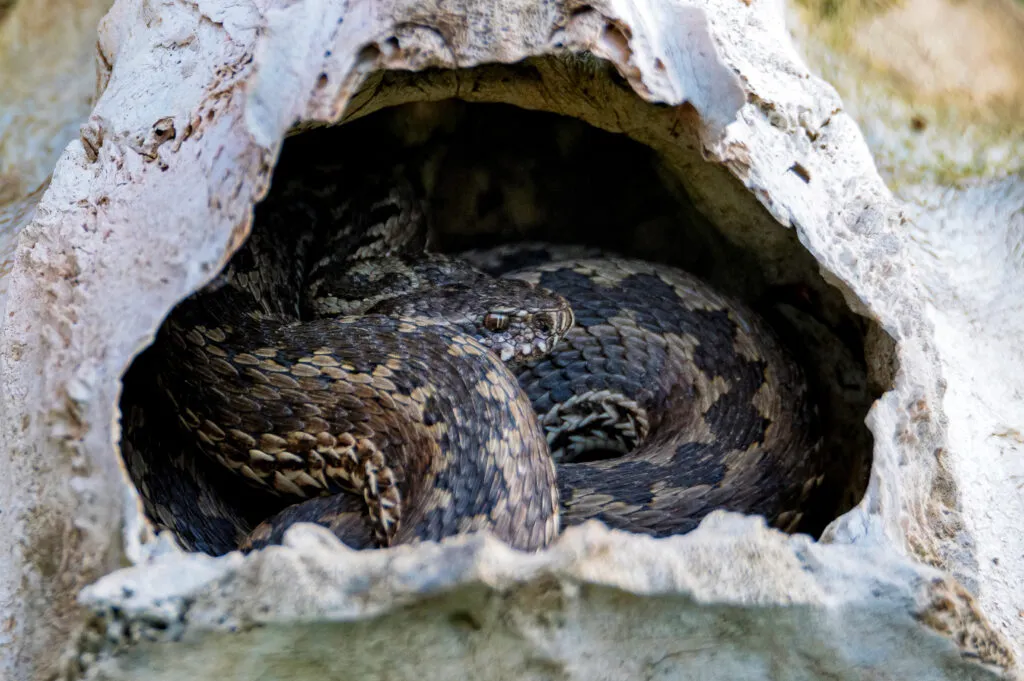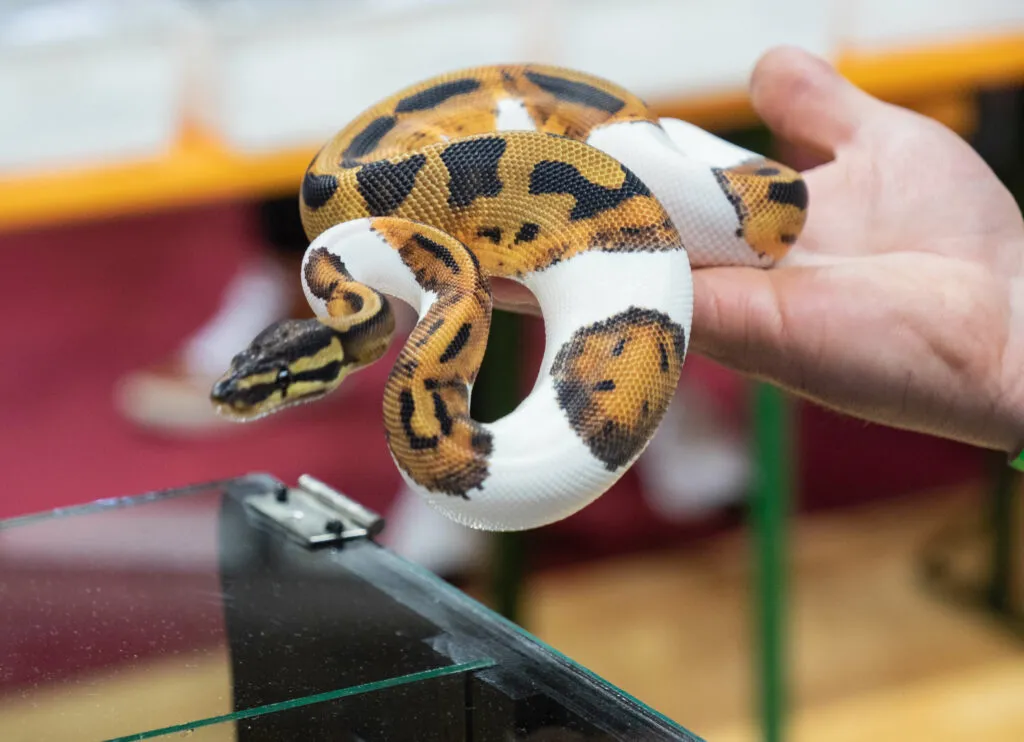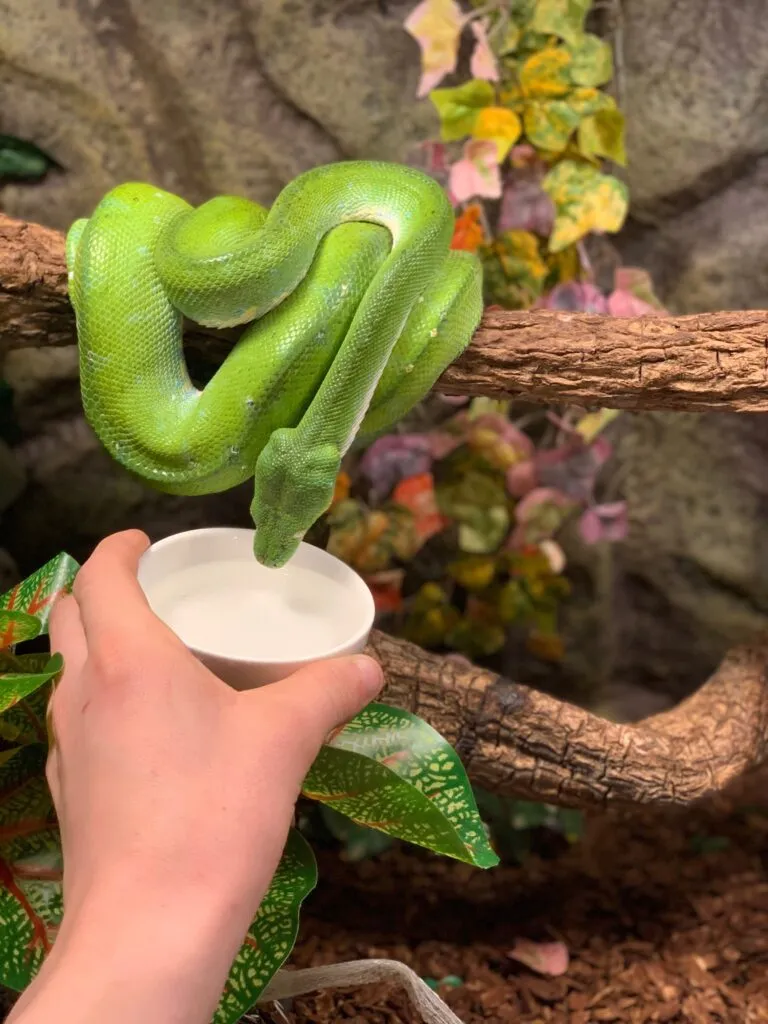
We all know that snakes, unlike dogs and cats, are not a type of pet you can play fetch with or lounge around the house. Why is your snake not active? Can you play with it? Is there something that you can do to make your snakes active?
In general, a snake is not an overly active pet. However, if it seems less active than it used to be, it may be nearing its shed or going into brumation. It can also be sick or the temperature in the enclosure is wrong. It may also feel overexposed, is gravid, or it just ate and took time to digest.
There are a lot of good and bad reasons as to why your slightly active snake suddenly becomes inactive. Do not fret as we will discuss those reasons as well as the things you can do to make your snake be active. So read on!
Table of Contents
Reasons Why Your Snake Is Not Active
It is not bad news when you see that your snake is just keeping to itself and not going out of its hide to explore. When your snake is eating well, drinking on its own, and able to pass
Snakes are not really active reptiles that will come out of their hide to greet you whenever you approach their enclosure.
There are some instances like this (brought about by excellent handling training and trust-building) but those cases are rare.
The key lies in deciphering whether your snake’s inactive behavior is still normal or it has to do with some problems.
Note: If you fear that your snake might be sick, it is always best to bring it to a vet immediately. If you don’t live near a reptile vet, book an online vet at Vetster. They offer 24/7 appointments at affordable rates.
1. Your Snake Is About To Shed

Before your snakes shed, they go into “blue.” This is where their scales get to a bluish-gray color and eye caps start to form in their eyes.
During this time, your snake feels vulnerable as it cannot see well and there are also bodily changes that are happening that make your snake feel a bit uncomfortable. Before they shed, they slow down their activity and may also even refuse
In order to feel safe, they just stay in one place until it is time to shed. They usually stay in the hide, and seek out rough surfaces to get rid of their old skin.
If you have a humidity box in the enclosure, they will just stay there until the shed is done.
This behavior is completely normal. Your snake slowed down its activity, simply to prepare for its shed. After a successful shed, things should go back to normal.
2. Your Snake Is Going Into Brumation

Brumation is much like hibernation, except the former does not require your snake to be in deep sleep. Alternatively, your snake will just slow down its activities in order to save on energy, but it will still go out from its hide to eat and drink.
In the wild, snakes will find an underground tunnel to keep warm from cold temperatures. How about when it is in captivity and has controlled temperatures?
Some snakes that are kept in captivity do not undergo brumation as there is no obvious shift of temperature during fall and winter.
However, some snakes enter a pseudo-brumation mode even when the temperature does not drop in their enclosure. They can simply feel that it is fall and winter.
Snakes that are also used for breeding go into brumation. This is done in order to simulate the natural breeding process in which snakes mate in spring after they are done brumating.
Should you feed your snake during brumation? You can find the answer in this article.
3. Your Snake Is Sick
As we mentioned before, it is natural for your snake to not be so active. However, it should be eager to feed whenever you come knocking at its enclosure with a feeder.
If your snake has been refusing its
- Infectious stomatitis or mouth rot
- Parasitic infections
- Inclusion Body Disease
- Respiratory Infections
- Septicemia
The tricky part is that all of these diseases’ symptoms come with inactivity or lethargy. Therefore, you should observe your snake closely to determine if its inactivity is no longer normal.
The biggest giveaway is that it refuses to eat and drink.
If this is the case, you should consult your vet immediately in order to find a solution and start treatment.
4. Your Snake’s Enclosure Has The Wrong Temperature
Most snakes thrive in a temperature range of 75-85 F. In this range, snakes can thermoregulate by themselves by going to the hot area to bask or cool off in the hide or soak in their water bowl.
Snakes cannot thermoregulate properly if the enclosure is too hot or too cold. If it is too hot they can suffer from irreversible neurological issues. In response, they will just stay put in the hide or soak in the water bowl for an extended period of time.
If the enclosure is too cold, they can get respiratory infections and may even die. In both extreme conditions, this will push your snake to be inactive in order to survive the harsh conditions.
5. Your Snake Just Finished Eating
One of the cases where you should never handle your snake is when it just finished eating. The reason for this is that it will stress your snake too much as it is a vulnerable time for them.
As your snake is full, it cannot move normally compared to when it has digested its

Therefore, digesting the
Once your snake is finished digesting its meal, it will return to its somehow active self.
6. Your Snake Is Gravid
If your female snake is pregnant (gravid), it will drastically slow down its activity. It was discussed in this study, that gravid snakes would even refuse food. There are even gravid snakes that become relatively anorexic before they give birth to the eggs.
In order for gravid snakes to survive without eating, they remain inactive to conserve energy. This is in preparation for the development of eggs in their bodies as well as the delivery of the eggs.
7. Your Snake’s Enclosure Is Too Big
This is usually an overlooked reason as to why your snake is not active. Having a big enough enclosure for your snake to roam around is one thing, but it is another thing if the enclosure is too big for your snake that it becomes anxious to explore its surroundings.
If the enclosure is too big, your snake may feel overexposed and unsafe. Therefore, instead of exploring its enclosure, it will just remain in one part of the enclosure where it feels the safest (usually the hide).
How Can I Make My Snake More Active?
We really cannot push our snakes to be active in the sense that they will greet us when we approach their enclosure or that they will try to play hide-and-seek in their enclosure.
It is simply not in your snake’s nature to do as they are solitary reptiles.
On the other hand, you can encourage your snake to become a bit active by utilizing enrichment objects in the enclosure and also making feeding habits mimic their wild instincts.
Add Enrichment Objects In The Enclosure
Enrichment objects can be:
- Differently sized hides
- Hides with holes at the sides or the back that your snake can slither into
- Large water bowls that can also double as a hide if they have hollow bottoms
- Rocks
- Live or fake plants (make sure that the live plant that you will place in the enclosure is not toxic for the type of your snake)
- Tree branches
- If you have an arboreal snake, you can put large branches that stand diagonally in the enclosure
- If you are on a budget you can use paper towel tubes as snake tunnels. Just make sure that it is large enough to fit your snake’s body.

Enrichment objects in the enclosure encourage your snake to leave its hide from time to time to explore its environment in a way that they do not feel insecure as it mimics the activity that they do in the wild.
Trigger Feeding Instincts
Inactive snakes can also be a product of captivity. As snakes get used to handling training and getting
This is where tong playing with
This may result in them, striking at you when you open the enclosure to feed them or to clean the enclosure.
Just do this occasionally to reinforce the natural instinct of your snakes when it comes to eating. Also, pair
Here are the steps:
- Take your feeder using a tong.
- Open your snake’s enclosure and dangle the feeder in front of your snake using tongs.
- Once your snake bites the feeder, do not release it, instead, try to move the tong from side to side to mimic resistance.
- After about five seconds of doing this, let go of the feeder, and let your snake eat in peace.
By just doing this simple tong play with
You can also try to hand feed your snake, especially if your snake is the type that fights with its tankmates during feeding time, just like garter snakes.
You do not have to tong play when doing this, as your snake will come out of hiding and open to receiving
Common Pet Snakes And Their Activity Levels
| Type of Snake | Activity Level |
| Corn Snakes | Medium – open to enrichment objects and handling |
| California Kingsnakes | Medium – climbs on enrichment objects |
| Garter Snakes | High – explores the enclosure, especially when it has tankmates |
| Rosy Boas | Low – will just stay in the hide and can be handled |
| Ball Pythons | Low – shy snakes that can come out of their shell by handling |
| Rat Snakes | Medium – comes out of hiding when there is activity outside the enclosure |
| Western Hognose Snakes | Low – hides and burrows in the hide or substrate |
| Milk Snakes | Medium – hides during the day and explores a bit at night |
| Gopher Snakes | Low – loves to burrow and can sometimes come out at night |
| Carpet Pythons | High – gives in to ambush instinct, applies this to enrichment objects |
| Children’s Pythons | Low – almost always in the hide or behind plants and rocks |
| Green Tree Pythons | Medium – climbs and stays on enrichment objects like branches |
| African Egg-Eating Snakes | Low – comes out of the hide during feeding time or to drink |
| Dekay’s Brown Snakes | Low – shy and burrows in the hide or substrate may explore enrichment objects |
| Ringneck Snakes | Low – rarely goes out of the hide, may even be apprehensive during feeding |
| Rainbow Boas | Medium – sometimes explores its enclosure, babies are quite active compared to adults |
| Rough Green Snakes | High – loves exploring the enclosure and can even come up to humans that approach the enclosure |
| Kenyan Sand Boas | Low – just burrows in the substrate, only comes out to feed |
| Bull Snakes | Medium – explores enclosure during the day |
| Cape House Snakes | High – “jumps” a lot and loves to explore the enclosure |
Conclusion
It is in the nature of snakes to not be too active. Just as long as they are eating and drinking well, releasing themselves normally, and the enclosure is maintained properly, you have nothing to worry about even when they just stay in one place.
If you have a feeling that your snake is suddenly not that active due to illness, seek out your vet immediately to find a solution.
Other than that, adding enrichment objects in the enclosure can encourage your snake to do some exploring.
- Enchi Ball Python: A Unique and Stunning Morph of Python regius - March 27, 2025
- Emerald Tree Monitor: The Enigmatic Green Guardian of the Rainforest - March 26, 2025
- The Egyptian Cobra (Naja haje): A Fascinating Serpent - March 25, 2025
